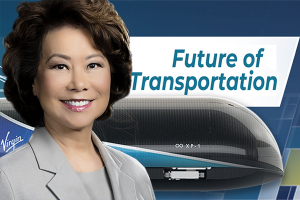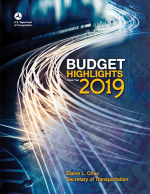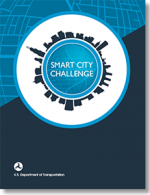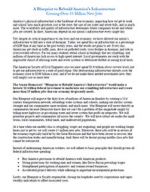Hyperloop Commercial Feasibility Analysis
This report provides a high-level evaluation of hyperloop in terms of its commercial potential, environmental impact, costs, safety issues, and regulatory issues and to identify hurdles to its commercial and/or operational feasibility.
Hyperloop is a concept for very high-speed, fixed-guideway, intercity surface transportation, using capsule-like vehicles that operate in sealed partial-vacuum tubes.
At this stage, the technology is unproven, but it has elicited a great deal of interest from journalists, investors, engineering firms, and governments.
This research is being conducted to provide a high-level evaluation of hyperloop in terms of its commercial potential, environmental impact, costs, safety issues, and regulatory and policy issues and to identify further research topics related to the technology.
This research is intended to provide NASA decision-makers with appropriate context to make decisions on the future direction of NASA’s involvement in Hyperloop research.
Commercial Potential-Passenger
The hyperloop technology is touted as having very fast speeds, faster than existing forms of passenger travel, and as being able to provide that service at lower cost than high speed rail (HSR). Hyperloop’s proposed speeds (maximum 720 – 760 mph and average of 600 mph) would indeed be faster than air, maglev, and HSR.
Commercial Potential-Freight
The early discussions related to hyperloop technology focused on its potential for passenger transport, but more recent discussions of hyperloop have focused on freight. This shift in focus to cargo is perhaps because of the (likely accurate) perception that it will be less risky to prove the technology on cargo than on passengers.
Environmental Impact
The various hyperloop proponents make much of the idea that hyperloop would be completely powered by solar technology. While that is certainly not true of air travel, both maglev and HSR are electrically powered and could be powered by solar if desired.
Costs
There is not much detailed information available about the costs of hyperloop. The most detailed information came from the “Hyperloop Alpha” white paper written by Elon Musk which provided an estimate of $17 million per mile. Subsequent to the Alpha white paper, HT gave a presentation citing $25 -$27 million per mile for just the technology, excluding land acquisition.
Regulatory and Policy Issues
At low fares (for example, $20 for Los Angeles to San Francisco) and relatively low capacity (pods carry 28 passengers and one tube in each direction), the hyperloop would not be able to cover its construction costs. Thus, a public entity of some sort would need to subsidize the endeavor.
Safety Issues
A completely new transportation mode needs to not only address safety issues that are known from existing modes but also anticipate any safety issues specific to it. The following issues have been identified and the companies that are developing the hyperloop technology are certainly aware of them. The proposed solutions would need to be carefully tested and vetted.
- How will tube construction allow for emergencies, such as rapid depressurization or large-scale leaks, capsule malfunction, or natural disasters such as earthquakes?
- What will happen in the event of the depressurization of a Hyperloop capsule?
- What happens if a capsule is stranded in the tube? Where will the emergency exits be?
- How fast can the capsule decelerate for emergency stop without damaging the system?
- What is the capsule behavior if it hits higher or even normal density air while traveling at 700 MPH? Can it be designed to survive that and protect the passengers? How fast will the capsule decelerate if it encounters high-density air?
- Can the problem of excessive drag on the capsules be overcome even in such a thin atmospheric environment? What is the potential of supersonic air surrounding the capsules?
- If there is a large tube breach, will the air be filling the tube at a high velocity? Will the additional speed and turbulence increase the danger to the capsule? Will oxygen masks work in a major capsule breach?
- How long will the system continue to run if power is lost in the area?
- Is it possible to provide a fire suppression system inside the capsule?
- What material and method of tube construction presents the ideal combination of safety, cost, and overall function (e.g., steel, carbon fiber, Kevlar)?
Key Research Questions
- Is the hyperloop transportation system sufficiently lightweight that there would significant construction cost savings compared to building an elevated HSR or maglev system?
- What are the technology hurdles to building hyperloop underwater and can they be overcome?
- Can the capacity of a hyperloop pod be expanded to seat more than the originally proposed 28 passengers?
- What would be the weight limit for a freight capsule?
- How big would the tube need to be in order to carry a standard size shipping container?
- Can the system be designed so that in addition to carrying long distance passengers, it can also provide local transit service?
- Would hyperloop be loud for passengers? Would hyperloop be loud in communities?
What’s Related




Favorites





